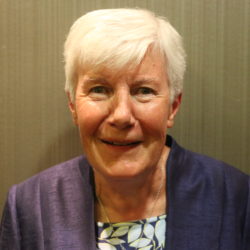As the first secondary school to open its doors to girls in Cork celebrates a milestone anniversary, former pupils and staff members are invited back to take a look through its 180-year history.
To mark the anniversary of its founding, St. Aloysius School in Cork City is preparing to open its doors on Saturday, November 16th, to welcome back past-students and staff members who may want to take a stroll down memory lane.
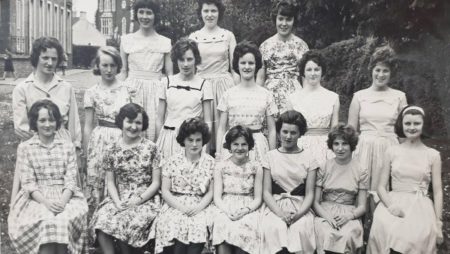 Students pictured in the school gardens in 1961
Students pictured in the school gardens in 1961
Among the distinguished past pupils of the school are Rena Buckley, one of the sportspeople in the country’s history; Dr. Miriam J. Smyth, a deputy director at the US Department of Veteran Affairs; and Karina Buckley, RTÉ weather presenter and founder member of ‘Climate Without Borders’.
In preparation for the anniversary, St. Aloysius teachers Miriam Uí Dhonnabháin, Patrick Foran and Amber Walsh have been examining the school’s history and archives.
St. Aloysius’ roots begin in 1839, when the Sisters of Mercy started their pension school out of a room in their convent on Rutland Street. This was at the suggestion of Mother Catherine McAuley.
At the same time, the Sisters also taught in parish schools in Carey’s Lane and in Blarney Lane, according to Ms. Uí Dhonnabháin, a former past-pupil who teaches Irish, English and heritage at the school today.
We’re very fortunate in that we had here for many years on staff, and in the convent, Sister Angela Bolster, who is also known by her own name, Evelyn Bolster. “She was a very eminent historian, she wrote the history of the Diocese of Cork and Ross and she did an awful lot of research on the life of Catherine McAuley and the work of the Sisters of Mercy.” When Catherine and her Sisters arrived, it was within a very short period of the cholera epidemic in Cork, and they had a dreadful journey. They came (to Cork) by ship from Dublin and a couple of them were really ill on the journey. They took one day to recover and the following day, they were visiting the poor. They got the names of people they ought to visit from the Presentation Sisters. So they were really hands-on and incredibly hardworking.
Within six years, the Great Famine arrived in Cork. “A number of the Sisters who arrived with Catherine died within the first 10 years, and certainly more of them died ministering to the poor during the famine,” Ms. Uí Dhonnabháin added.
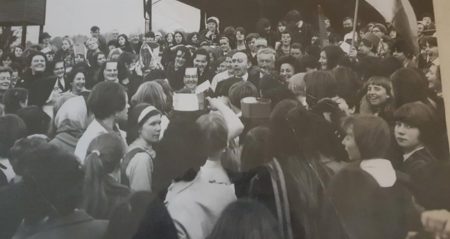 Celebrating a St. Aloysuis camogie win. Pictured in the centre is Sister Columba, who was the Principal of the school from 1963 to 1979
Celebrating a St. Aloysuis camogie win. Pictured in the centre is Sister Columba, who was the Principal of the school from 1963 to 1979
It would have been easy (for the Sisters) to cut and run because these girls generally speaking came, generally speaking, from comfortable backgrounds themselves. They chose to do what they were doing.
While the Presentation Sisters ran a primary school on Douglas Street at the time, there wouldn’t have been the option of any kind of secondary education for the young women of Cork city. “It was very forward-looking,” she said, adding that St. Aloysius was also set up in a very poor area.
Students at the time would have studied Irish, English, Latin, French, arithmetic, science, history, geography and book-keeping with art, with music, elocution and PE offered as extras. Catherine was a great believer in practical subjects for women, things that would enable them to earn a living.
St. Aloysius was also the first girls’ school in Ireland to offer physics for the Leaving Cert, which it introduced in the 1930’s.
“It was fairly significant. Sister Mercedes Desmond in the convent, who was our Principal here for many years, and prior to that a chemistry teacher, was recognized for her work in the field of science, for women, and in University College Cork (UCC), and also by the Science Teachers Association of Ireland.”
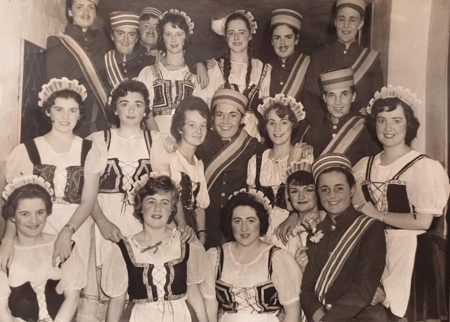 A school production of ‘The Student Prince’ in 1963
A school production of ‘The Student Prince’ in 1963
The school also has an impressive sporting history, according to Patrick Foran, who teaches history and geography at the school. “In 1969, the school made it to the first-ever All-Ireland school’s final in camogie, and took home the title in 1976.” In 1927, St. Als moved to a two-storey building on its present site. Following a major build in 1970, the school expanded to include, among other facilities, a purpose built library.
This year, the school received the PDST Wellread National Award following a two-year campaign started by teachers Amber Walsh and Amanda Gaine to promote a culture of reading within the school community.
The school will open its doors between 10.30am and 3.30pm on Saturday. During the course of the day, the school choir is due to perform. Two heritage and history talks are also due to take place, one at 11 am and the other at 2pm.
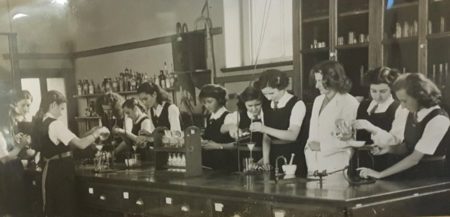 Class in the old science room at St. Aloysuis in 1947
Class in the old science room at St. Aloysuis in 1947
“We’re also going to have a display of St. Aloysius through the decades along the corridors of the school,” Patrick Foran said. “We will have photographs from each decade so past pupils can see if they can find themselves. We’ve lots of lovely old photographs, going way back into the 1930s even.”
Students have also put together a timeline charting both the history of the school as well as the major events that were happening at the time, according to Amber Walsh.
“When you think about how long the school is here, the history of St. Als really is the history of Cork city. Cork has always been a forward-looking city, and county.”
This article was first published in the Irish Examiner and was written by Jess Casey

